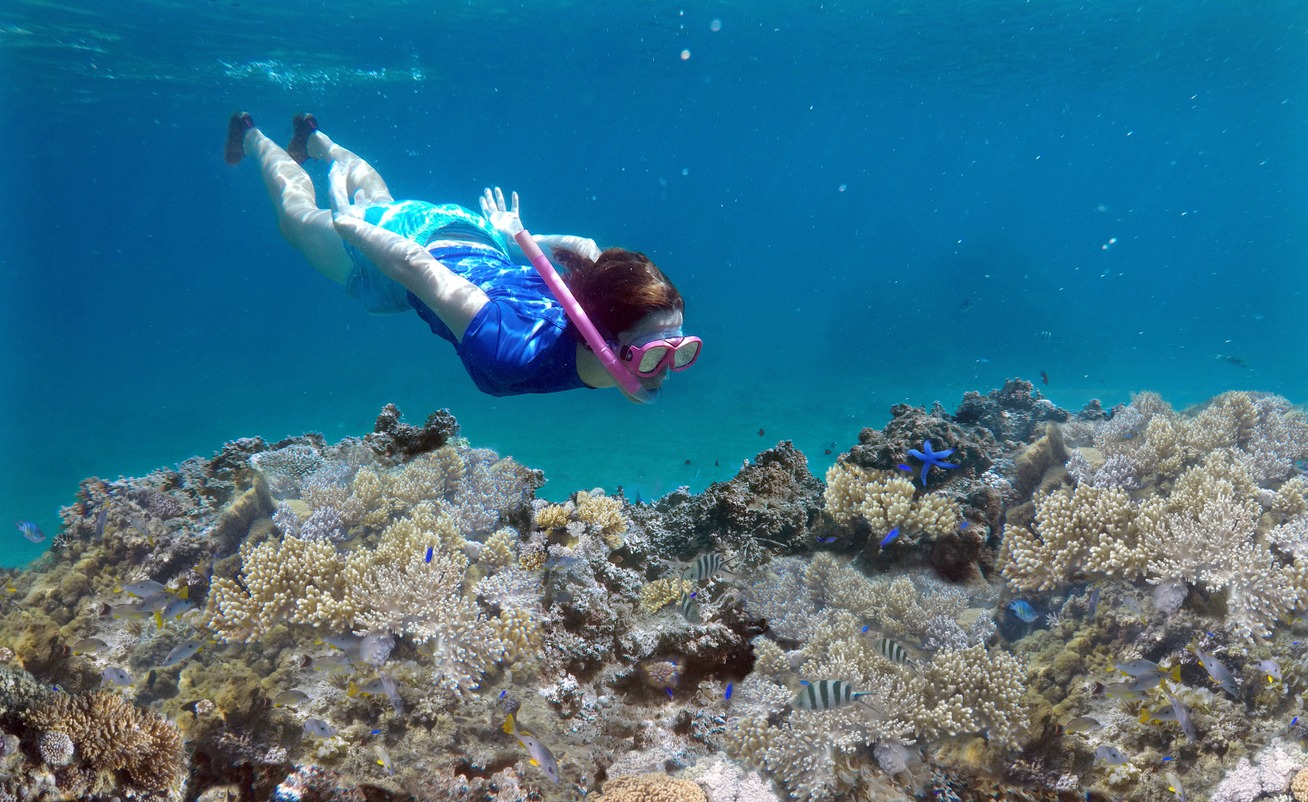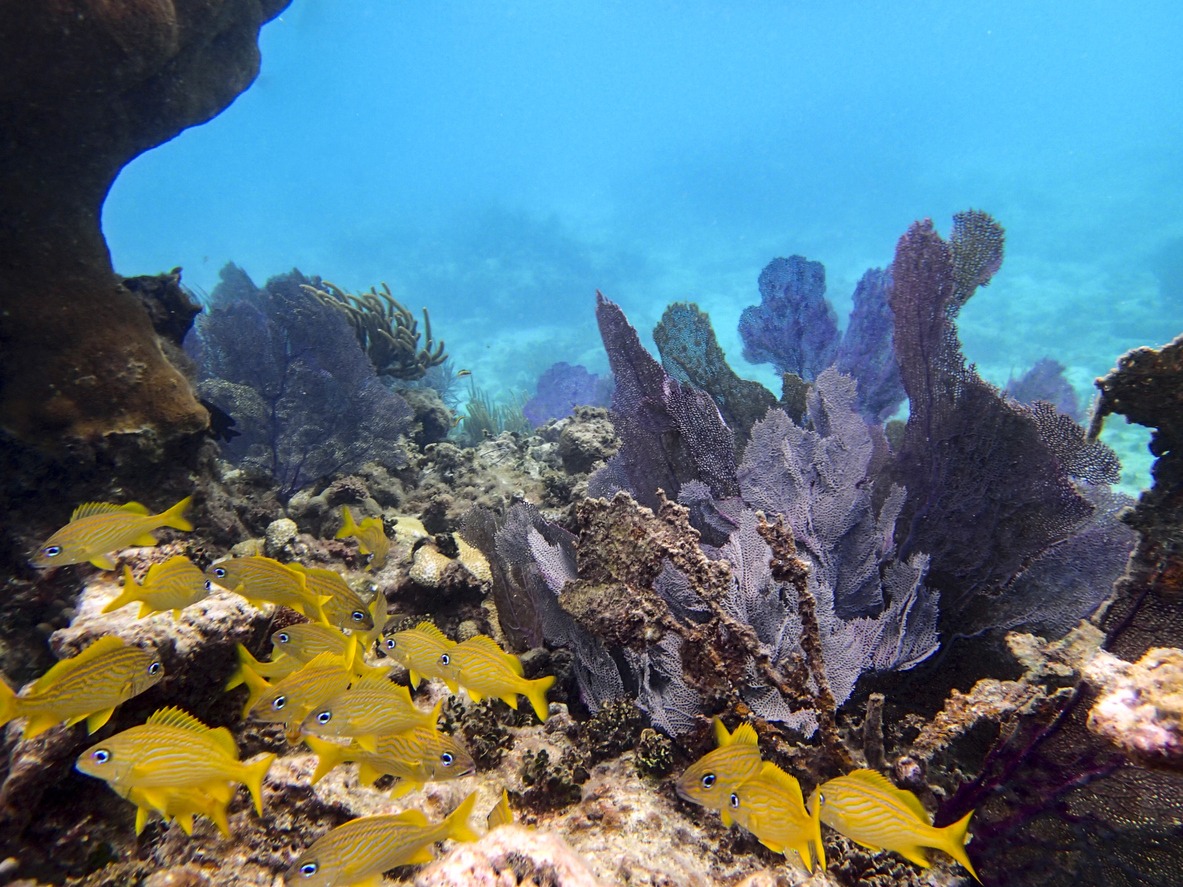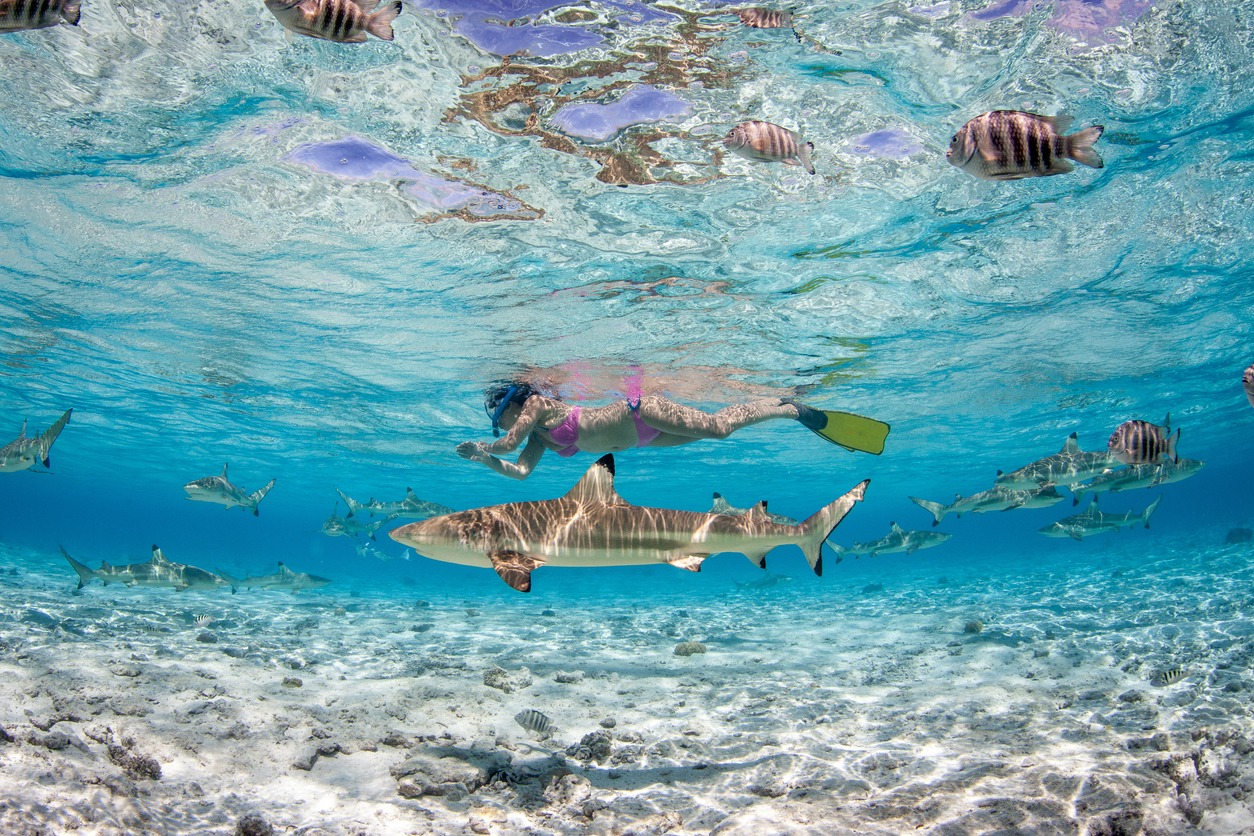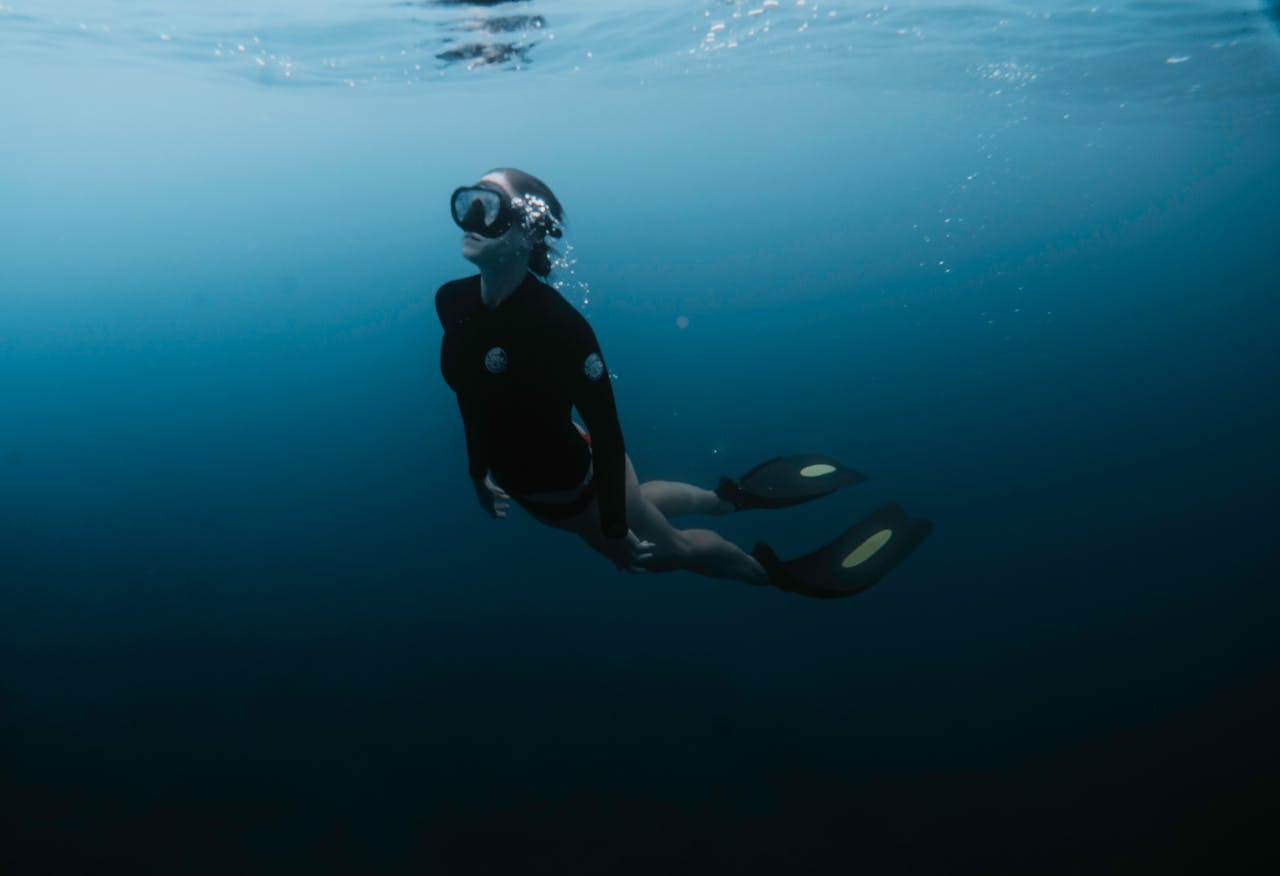Best UV Sunscreens for Boating and Watersports
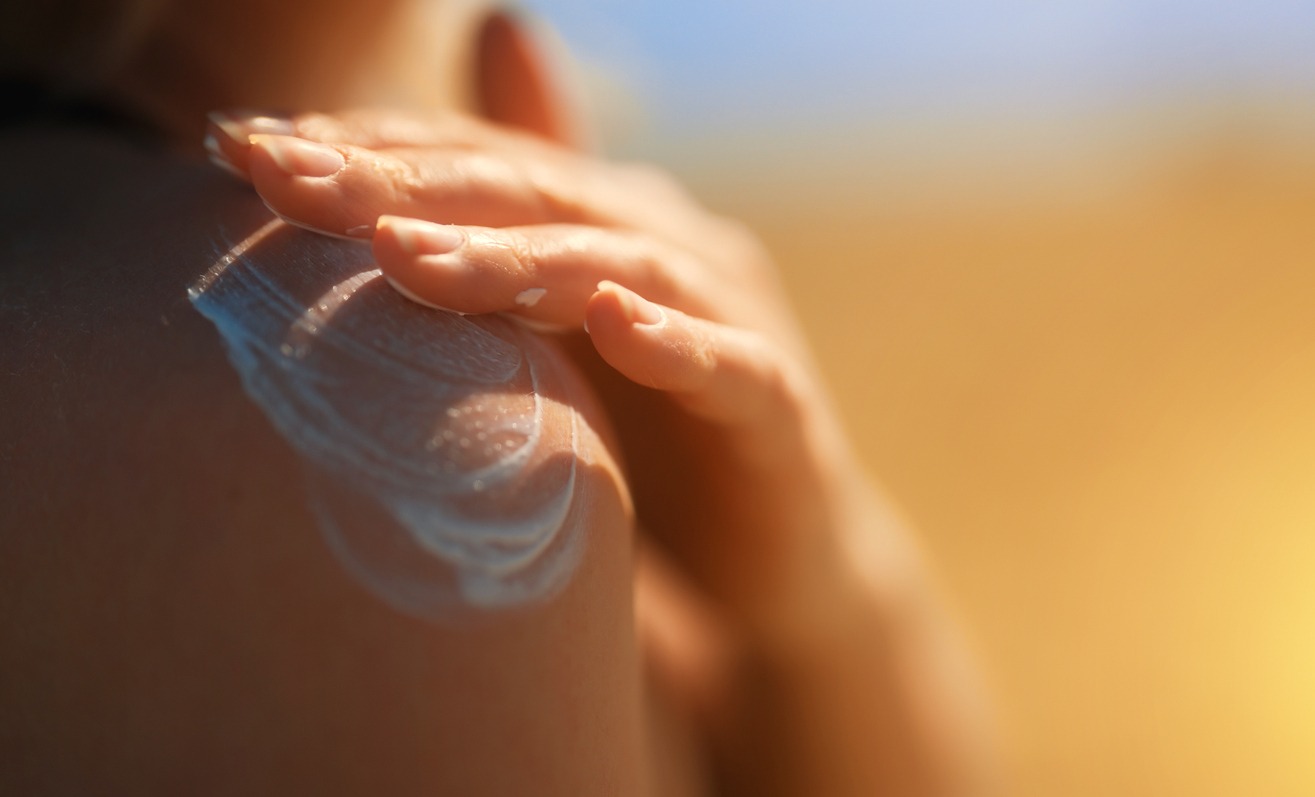
When boating or enjoying watersports, you need a high-performance sunscreen to protect your skin from intense UV rays. Look for broad-spectrum, water-resistant formulas with an SPF of 30 or higher. Mineral-based sunscreens containing zinc oxide or titanium dioxide are excellent choices, offering both UVA and UVB protection. These ingredients are also considered reef-safe, making them ideal for eco-conscious boaters. Apply liberally and reapply every two hours, or more frequently if swimming or sweating. Remember, sunscreen is just one part of an extensive sun protection strategy. By understanding the key factors in choosing and using sunscreen, you'll be well-equipped to enjoy your time on the water safely.
Understanding UV Protection Basics
How well do you understand UV protection? When it comes to boating and watersports, knowing the fundamentals of UV protection is indispensable for your skin's health. Sun protection factor (SPF) is a key measure of how well a sunscreen shields you from UVB rays. An SPF 30 sunscreen blocks 97% of UVB radiation, while SPF 50 blocks 98%. However, don't be misled into thinking higher SPF means complete protection.
To get thorough coverage, you'll want to choose a wide-ranging sunscreen that protects against both UVB and UVA rays. When you apply sunscreen, use at least 1 ounce (2 tablespoons) for your entire body. Remember to reapply every 2 hours, especially after swimming or sweating. It's critical to recognize that no sunscreen can provide 100% protection, and factors like your skin type, medications, and environmental conditions can reduce its effectiveness.
UV rays can penetrate cloud cover and fog, and exposure occurs even in rainy conditions. For water enthusiasts, consider using eco-friendly and biodegradable sunscreens to protect marine ecosystems. By understanding these UV protection fundamentals, you'll be better equipped to choose and use the right sunscreen for your boating and watersport excursions.
Top Sunscreen Ingredients for Boaters
Armed with the basics of UV protection, let's investigate the top sunscreen ingredients that boaters should look for. When choosing a sunscreen for your aquatic escapades, prioritize mineral-based options containing zinc oxide or titanium dioxide. These ingredients physically block and reflect UV rays, providing superior protection on the water. They're especially effective when you're out from under your Bimini top and exposed to direct sunlight.
Opt for broad-spectrum sunscreens that shield you from both UVA and UVB radiation, ensuring comprehensive coverage. Look for water-resistant and sweat-proof formulations to maintain protection during your boating activities. Choose sunscreens with an SPF of 30 or higher, which block at least 97% of UVB rays. Mineral sunscreens are considered more reef-friendly than chemical sunscreens, as certain ingredients like oxybenzone and octinoxate can damage coral reefs.
It's vital to select reef-safe alternatives that don't contain harmful chemicals. By choosing environmentally friendly options, you're not only protecting your skin but also preserving the waters you enjoy.
Water-Resistant Formulas Explained
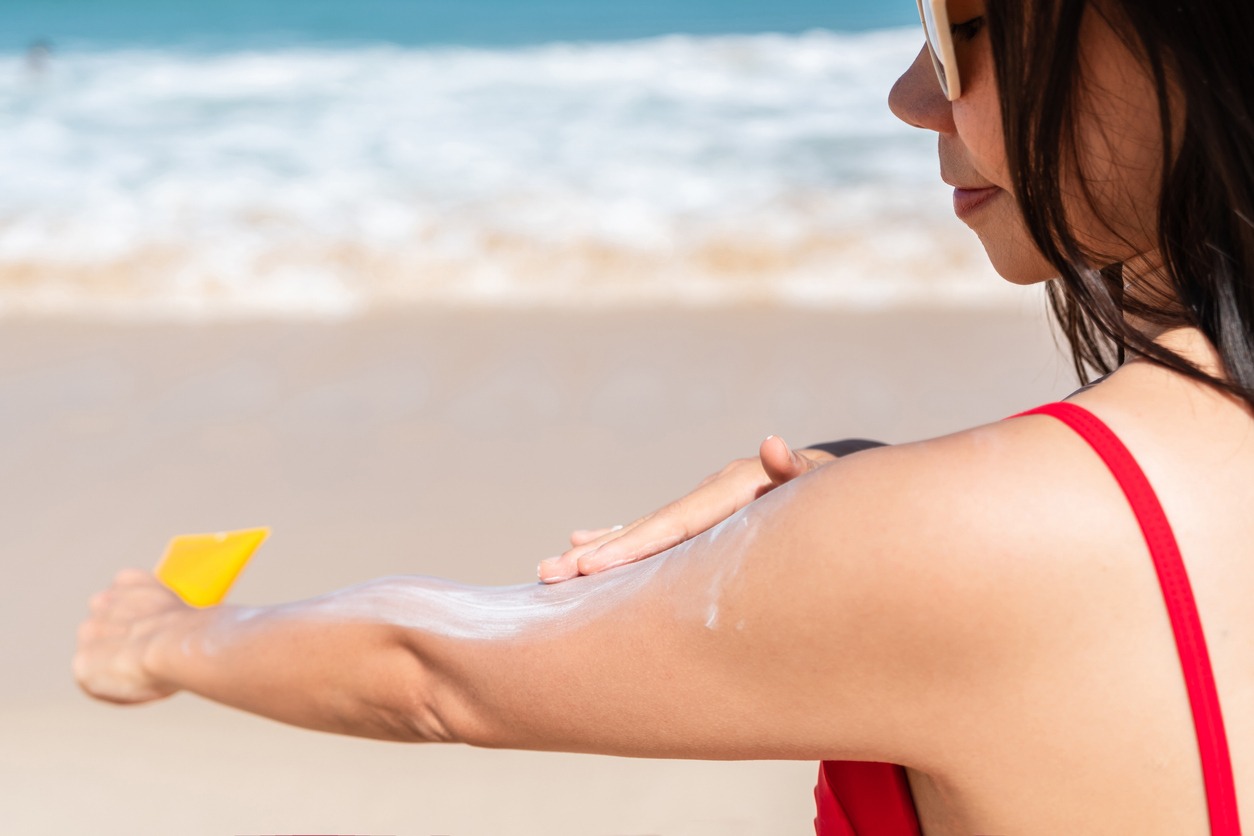
Durability is key when it comes to sunscreen for boating and watersports. Water-resistant formulas are specifically designed to maintain their effectiveness for up to 80 minutes when you're in the water or sweating. These specialized sunscreens adhere better to your skin, preventing them from washing off as easily during your aquatic pursuits.
When choosing a water-resistant sunscreen, look for labels indicating "water resistant (40 minutes)" or "water resistant (80 minutes)." These designations tell you how long the product will remain effective in wet conditions. Many water-resistant sunscreens also offer broad-spectrum protection, often containing ingredients like titanium dioxide or zinc oxide to shield you from both UVA and UVB rays. Additionally, wearing a high-quality, well-fitting wetsuit can help preserve body temperature while snorkeling in cold water.
Remember that even with water-resistant formulas, reapplication is essential. You should reapply your sunscreen:
- Every 2 hours
- After towel drying
- Following periods of heavy sweating
- After swimming or water activities
While water-resistant sunscreens provide enhanced protection during your boating or watersport endeavors, they're not completely waterproof. Always follow the reapplication guidelines to guarantee you're adequately protected throughout your time on the water. By understanding how water-resistant formulas work, you can make informed choices to keep your skin safe while enjoying your favorite aquatic pastimes.
Reef-Safe Options for Eco-Conscious Boaters
Eco-conscious boaters now have a range of reef-safe sunscreen options to protect both their skin and marine ecosystems. When choosing a sunscreen for your nautical excursions, look for products labeled "reef-safe," "reef-friendly," or "coral-safe." These sunscreens contain mineral-based active ingredients like zinc oxide and titanium dioxide, which effectively block UV rays without harming coral reefs.
Unlike chemical sunscreens that dissolve in water, mineral sunscreens sit on top of your skin, providing a physical barrier against harmful rays. They're less likely to wash off and pollute marine environments. Opt for lotions or creams instead of sprays, as they're less likely to contribute to water pollution or stain your boat's surfaces.
Popular reef-safe options include Kokua Sun Care Hawaiian SPF 50, Blue Lizard Sport Mineral-Based SPF 50+, and Thrive Bodyshield 50. These sunscreens offer excellent protection for your skin while minimizing environmental impact. Remember, while "reef-safe" isn't yet a regulated term, choosing mineral-based sunscreens is a step towards preserving our oceans. By selecting these eco-friendly options, you're not only shielding your skin from harmful UV rays but also protecting the delicate marine ecosystems you enjoy during your boating expeditions.
Application Techniques for Maximum Coverage
Now that you've selected a reef-safe sunscreen, it's time to focus on proper application techniques for maximum coverage. To protect your skin effectively from harmful UVB rays, apply sunscreen liberally, using about 1 ounce (2 tablespoons) to cover your entire body. Don't forget often-missed areas like your lips, ears, and tops of your feet. For thorough absorption, apply sunscreen 15-30 minutes before sun exposure.
Remember to reapply sunscreen every two hours, or more frequently if you're swimming or sweating heavily. This is especially important for those with sensitive skin. To guarantee maximum protection, use a sunscreen with an SPF of 30 or higher.
Wear sun-protective clothing, such as long-sleeved shirts and wide-brimmed hats
Seek shade during peak sun hours (10 am to 4 pm)
Use waterproof sunscreen for water activities
Apply sunscreen before putting on your swimsuit to avoid missing spots
Sunscreen Myths Debunked
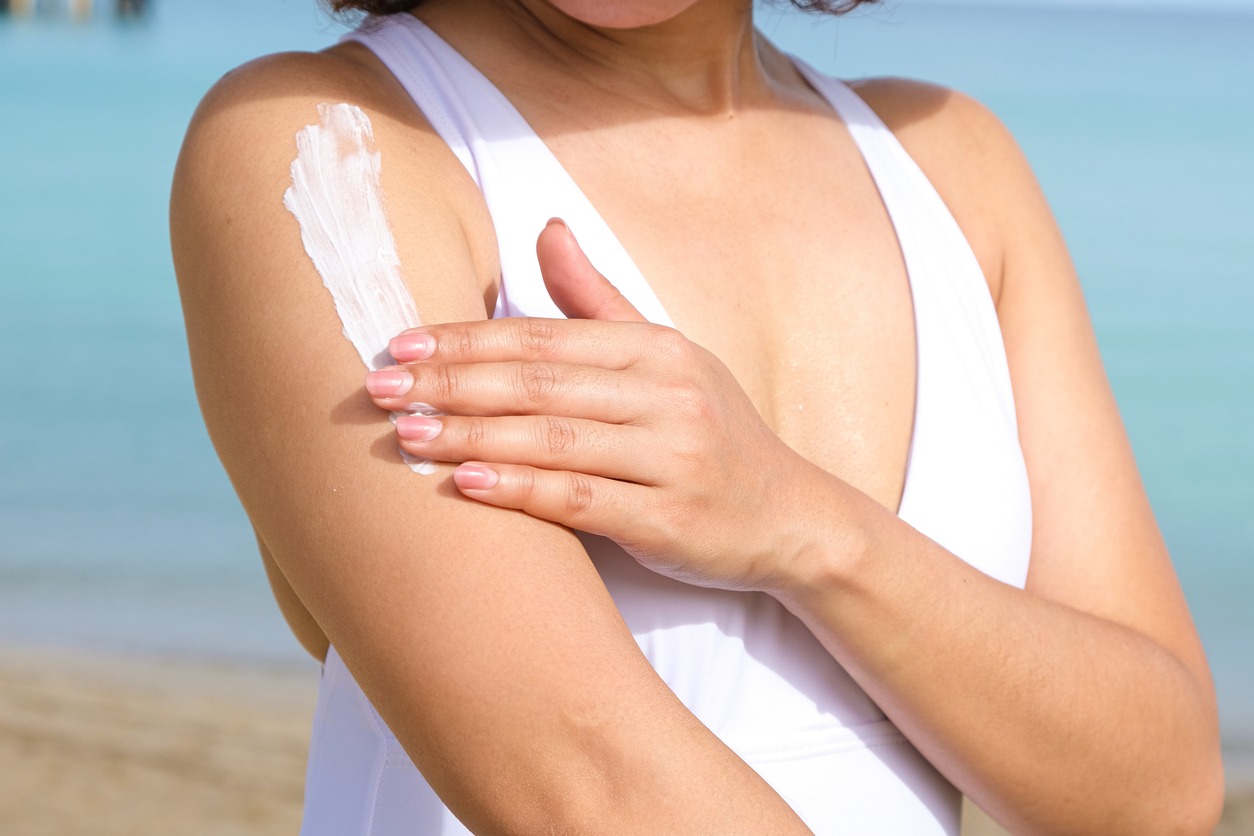
Let's bust some common sunscreen myths that might be misleading you. You might think that shelling out for expensive, high-SPF sunscreens is the best way to protect your skin during water activities, but that's not necessarily true. Top sunscreens containing the right active ingredients can be affordable and just as effective. SPF 30 blocks about 97% of UVB rays, while higher SPFs only marginally increase protection.
Don't fall for "waterproof" or "sweatproof" labels, as no sunscreen truly resists water or sweat indefinitely. You'll still need to reapply regularly when boating or engaging in watersports. Remember, SPF only measures UVB protection, not UVA, which contributes to premature aging and skin damage. Look for broad-spectrum protection to shield against both.
Sunscreen alone isn't enough to fully protect you from harmful UV rays. Combine it with protective clothing, hats, and seeking shade when possible. By understanding these sunscreen facts, you can make informed choices to keep your skin safe while enjoying your time on the water.
Complementary Sun Protection Strategies
While sunscreen is a key player in your UV defense arsenal, it shouldn't be your only line of protection. As a Boat Owner, you need to adopt a holistic approach to shield yourself from skin aging and harmful UV rays during your time on the water. To maximize your protection, combine sunscreen use with other sun-safe strategies.
When you buy to protect yourself from the sun, consider investing in:
- Sun-protective clothing
- Wide-brimmed hats
- Polarized sunglasses
- Shade structures for your boat
Seek shade under boat features like bimini tops, hardtops, or T-tops when possible. These provide relief from direct sun exposure and complement your other protection methods. Remember to reapply your broad-spectrum, water-resistant sunscreen with SPF 30 or higher every two hours, especially after swimming or sweating.

